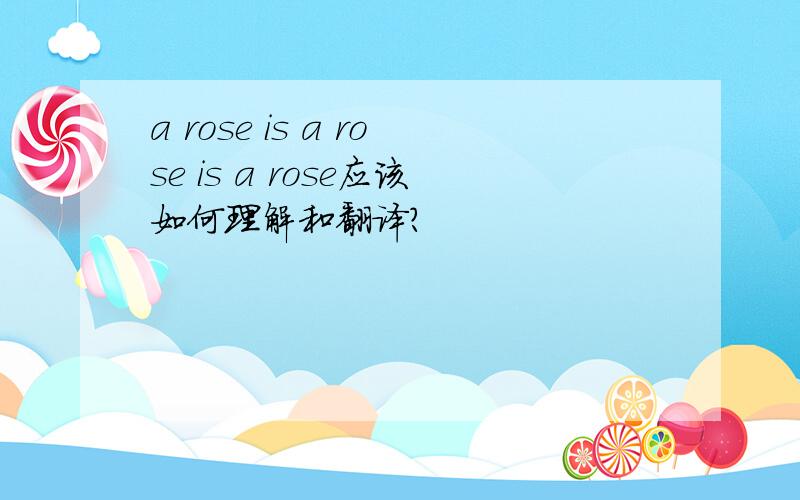a rose is a rose is a rose应该如何理解和翻译?
来源:学生作业帮助网 编辑:作业帮 时间:2024/04/28 05:17:41

a rose is a rose is a rose应该如何理解和翻译?
a rose is a rose is a rose应该如何理解和翻译?
a rose is a rose is a rose应该如何理解和翻译?
Rose is a rose is a rose is a rose 是捷尔特茹德•斯坦因的一句诗.意思是“罗斯是玫瑰就像玫瑰就是玫瑰一样”.她首次在英语中连用三个is.
所以,A rose is a rose is a rose 的意思是“一朵玫瑰就像一朵玫瑰是一朵玫瑰一样”.
以下是本句子的来源
The sentence "Rose is a rose is a rose is a rose." was written by Gertrude Stein as part of the 1913 poem Sacred Emily, which appeared in the 1922 book Geography and Plays. In that poem,...
全部展开
以下是本句子的来源
The sentence "Rose is a rose is a rose is a rose." was written by Gertrude Stein as part of the 1913 poem Sacred Emily, which appeared in the 1922 book Geography and Plays. In that poem, the first "Rose" is the name of a woman. Stein later used variations on the phrase in other writings, and "A rose is a rose is a rose" is probably her most famous quote, often interpreted as "things are what they are." In Stein's view, the sentence expresses the fact that simply using the name of a thing already invokes the imagery and emotions associated with it. As the quote diffused through her own writing, and the culture at large, Stein once remarked "Now listen! I’m a fool. I know that in daily life we don’t go around saying 'is a … is a … is a …' Yes, I’m no fool; but I think that in that line the rose is red for the first time in English poetry for a hundred years." (Four in America)
Gertrude Stein's repetitive language can be said to refer to the changing quality of language in time and history. She herself said to an audience at Oxford University that the statement referred to the fact that when the Romantics used the word "rose" it had a direct relationship to an actual rose. For later periods in literature this would no longer be true. The eras following romanticism, notably the modern era, use the word rose to refer to the actual rose, yet they also imply, through the use of the word, the archetypical elements of the romantic era. It also follows the rhetoric law of thricefold repetition to emphasize a point, as can be seen in speeches dating back to the sophists.
收起
牛!!!长见识了